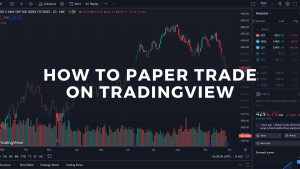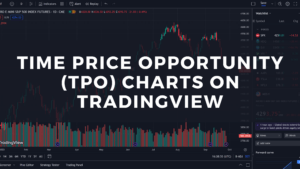This article on Trading the Most Liquid Futures Contracts is the opinion of Optimus Futures.
It doesn’t matter what type of futures trader you are, day trader, momentum, or even swing…it won’t help you if you’re not trading the most liquid futures contracts.
For a trade to go through in the futures market, the buyer and the seller must agree on a price. There are always two prices, the bid price, which is the price buyers are willing to pay. And the asking price, which is the price sellers are offering out.
Today we’ll take a deep dive into the most liquid futures contracts and the benefits of trading them.
The Basics of Trading Liquidity
As mentioned above, every futures contract has two prices, a bid and an ask price.
But how can you tell if the futures contract you’re interested in is liquid enough to trade?
While this might seem like a daunting task, it’s actually pretty straightforward.
Step One: Analyze The Difference Between The Bid and Ask Prices AKA “The Spread”
In the futures market, there are wide and tight markets.
A wide market is considered one in which the difference between the bid price and the asking price is significant.
A tight market is one in which the bid price and ask price are not far off.
If the spread is just one tick, the minimum price movement for a futures contract, it is considered a tight spread with high liquidity.
The difference between the two can be relative.
For example, check out this chart of the E-Mini S&P Futures (ES):
Charts courtesy of Optimus Flow
The most competitive bids and offers are shown at the top.
- The bid price is $3,325.50.
- The asking price is $3,325.75.
- 132 contracts are being offered at the $3,325.50 bid price.
- 177 contracts are offered at the $3,325.75 ask price.
On the other hand, let’s say you had your eyes set on trading bitcoin futures 70-90 days out and want to take a crack at the October BTC futures.
You look at the bid price, and it’s $24,100 for one contract, and the offer price is $24,255 with one contract being offered.
Given the minimum tick size is 5 points, the difference of 155 point spread between the bid and the ask spread is quite wide. Plus, there is only one contract being offered at either price.
Why does this matter?
When you’re trading, you need to consider the slippage involved. Slippage is the cost you pay to buy at the ask price and sell at the bid price, all else being equal.
For example, if you bought BTC futures, you’d need the asset to move 155 points just to break even.
And then you have to consider you might lose 155 points on the way out. In other words, the wider the spread between the bid and ask prices, the more you’ll have to overcome slippage before the trade can be profitable.
That’s why you should try to avoid futures contracts with a wide bid/ask spread.
Step Two: Volume Is King
Besides examining the bid/ask spread, you should also look at the overall volume traded.
Volume is the number of contracts traded for a futures contract that day.
Ideally, you want to focus on the most actively traded futures contracts because they will provide the best liquidity and the slightest slippage.
Examples of actively traded futures contracts:
- 10-Year T-Note (ZN)
- Eurodollar (GE)
- S&P 500 E-Mini (ES)
- S&P 500 Micro E-Mini Futures (MES)
- 5-Year T-Note (ZF)
- Nasdaq 100 E-Mini (NQ)
- Nasdaq 100 Micro E-Mini Futures (MNQ)
- Russell 2000 E-Mini Futures (RTY)
- Russell 2000 Micro E-Mini Futures (M2K)
- 30-Year T-Bond (ZB)
- Crude Oil (CL)
- Euro FX (E6)
- Corn (ZC)
- Gold (GC)
- Soybeans (ZS)
On any given day, you may see hundreds of thousands of contracts traded on these symbols, and in the case of ZN, ES, and ZF, millions.
According to the Chicago Mercantile Exchange, interest rate and equity products are the most active, followed by energy and currency futures.
Source: CME Group
The Most Liquid Futures Contracts By Sector
Grains/Agriculture: Corn (ZC) and Soybean (ZS) futures are the two most active futures.
On the other hand, you’d want to avoid trading Canola (RS), Hard Red Wheat (KE), and Oats (ZO) because of their low trading volumes.
Energy: The most liquid futures contract in the sector is Crude Oil WTI (CL). It is 5x more active than Natural Gas (NG), which is still quite liquid, and nearly 7x more active than Gasoline (RB).
Ethanol Chicago (FL) and Crude Oil Brent (QA) tend to have low liquidity and wide spreads.
Metals: The top dog in the sector is Gold (GC) futures, which see 2x the volume as Silver (SI) futures, though Silver futures are very liquid.
Be careful trading Palladium (PA) and Platinum (PL) due to their wide bid/ask spreads and low trading volumes.
Livestock: Live Cattle (LE) is this space’s most active futures contract. However, it trades on thin volume.
This sector tends to have lower liquidity than others and isn’t well-suited for active traders.
Softs: Similar to livestock, softs aren’t very liquid. Cotton (CT), Coffee (KC), and Sugar #11 (SB) are all thinly traded and tend to have low liquidity and trade at odd hours.
Indices: Here, you’ll find some of the most liquid futures contracts available. The best ones in order are S&P 500 E-Mini (ES), Nasdaq 100 E-Mini (NQ), and Dow Futures Mini (YM).
There are also micro contracts for each of these major indexes that are actively traded as well.
Currencies: While the FX market is among the most actively traded on the planet, FX futures are also extremely liquid. Here are the best ones to trade based on liquidity: Euro FX (E6), Japanese Yen (J6), British Pound (B6), and Australian Dollar (A6).
On the other hand, be careful trading Bitcoin (BTC), Brazilian Real (L6), and the Russian Ruble (R6), since their trading volumes are low. You can also find micro futures for many of the major currencies.
Financials: Here is where a lot of the futures action takes place. This is where economists and analysts look for the “smart money” bets and hedges on the economy.
The best products to trade in this sector include 10-Year T-Notes (ZN), 5-Year T-Notes (ZF), 2-Year T-Notes (ZT), Eurodollar (GE), and the 30-Year T-Bond (ZB).
The Bottom Line
You can have a solid trading strategy. However, you’ll need liquid and actively traded futures contracts to turn the strategy profitable.
Illiquid contracts make it difficult to get in and out of a trade. Plus, as we noted earlier, you’ll deal with slippage that eats away at your potential gains.
Pay attention to the bid/ask spread and ensure it’s competitive. Also, watch the daily trading volume to see how active the contract is.
In most cases, the front month futures contract will be the most active. Generally, the farther you go out, the less liquid the contract is. That’s why it’s critical you not only pick the right futures product to trade but also the right contract month.
If you’d like to see how this all works, click here to open up a demo account to see how these contracts move in real-time.
There is a substantial risk of loss in futures trading. Past performance is not indicative of future results.



















